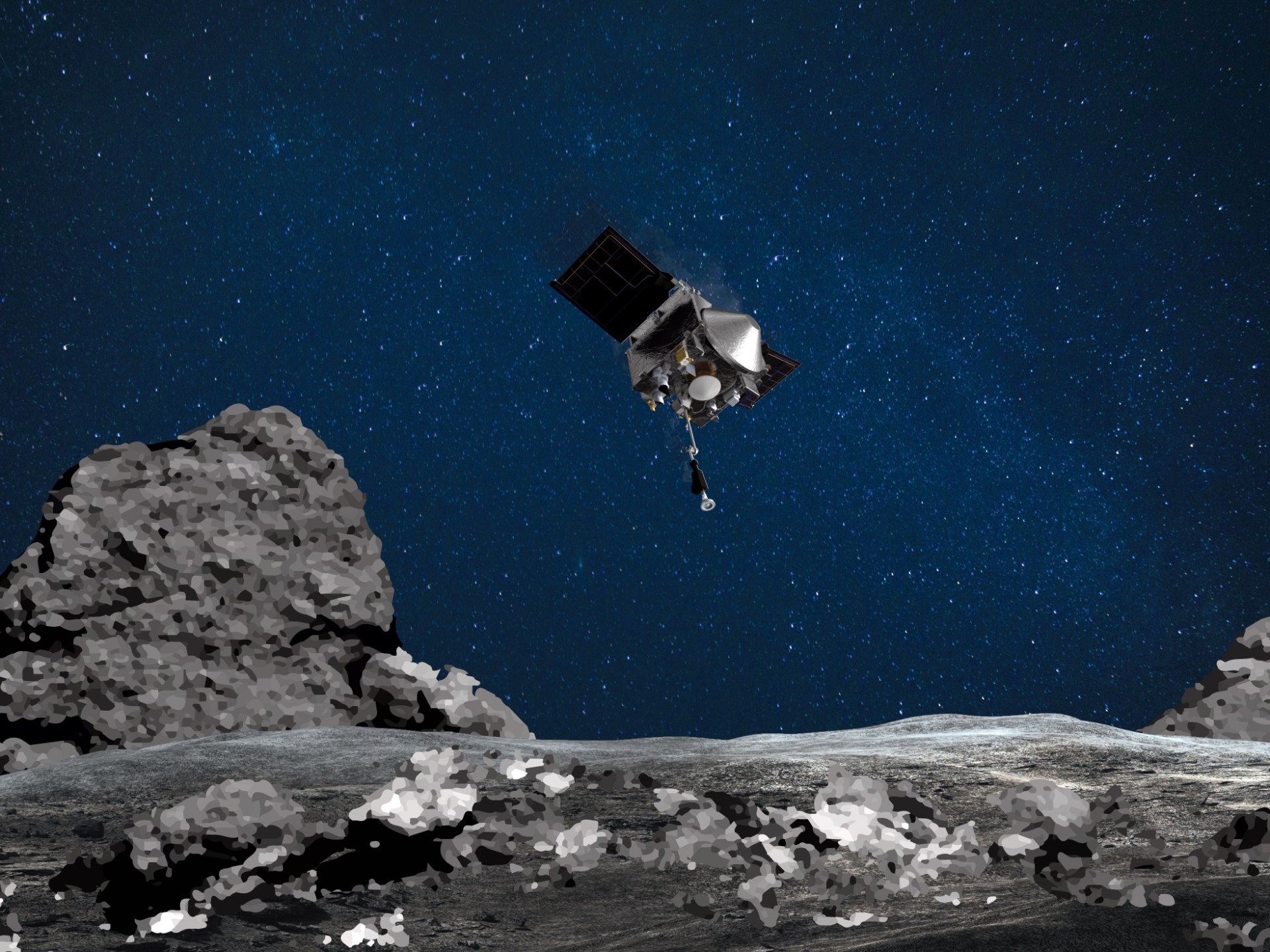
The US Space Agency and scientists say that the sample taken from Bennu contains abundant amounts of water and carbon, in addition to iron minerals.
NASA said that a sample of material collected from the surface of the near-Earth asteroid Bennu was found to contain abundant amounts of water and carbon, providing more evidence for the theory that life on Earth came from outer space.
The findings were announced Wednesday as NASA gave the public a first glimpse at what scientists found inside a sealed capsule returned to Earth last month after carrying materials extracted from the surface of the 4.5 billion-year-old asteroid by the OSIRIS-REx spacecraft. .
“This is the largest carbon-rich asteroid sample ever returned to Earth,” NASA Administrator Bill Nelson said at a news conference at the Johnson Space Center in Houston, where the first images of the black dust and gravel were revealed.
Nelson said carbon represented approximately 5% of the sample’s total weight, and was present in organic and mineral forms, while water was trapped within the crystalline structure of the clay minerals.
The findings were made through preliminary analysis that includes scanning electron microscopy, X-ray computed tomography, and more.
Preliminary findings suggest the possibility of further discoveries that could support the hypothesis that the early Earth was seeded with the initial ingredients for life through celestial bodies such as comets, asteroids and meteorites that bombarded the young planet.
“The secrets contained within the rocks and dust generated by the asteroid will be studied for decades to come, providing insight into how our solar system was formed, how the raw materials for life might have been seeded on Earth, and what precautions should be taken to avoid asteroids colliding with our home planet.” NASA said in a statement.
More carbon than expected and an abundance of water were found in the 4.5 billion-year-old asteroid sample returned to Earth by #osirisrex. The combination of the two could mean that the building blocks of life on Earth may be trapped in these rocks: https://t.co/IY6QfXXqeT pic.twitter.com/olxjDQG6bm
– NASA (@NASA) October 11, 2023
“These things are an astrobiologist’s dream,” said Daniel Glavin, a senior NASA scientist. Early analysis found the material appeared to be “full of organic matter,” he said.
The early results are the result of a seven-year round-trip the Osiris-REx spacecraft made to Bennu’s surface before dropping the collected sample into a sealed capsule that was parachuted back to Earth last month.
OSIRIS-REx launched in 2016 and reached Bennu in 2018, then spent nearly two years orbiting the asteroid before getting close enough to grab a sample of the bulk surface material with its robotic arm in October 2020.
No one at Wednesday’s event was able to see any of the samples directly — only photos and video. The asteroid pieces remain behind closed doors in a new laboratory at the space center, and are accessible only to scientists wearing protective clothing.
Images of the sample displayed showed a loose collection of small charcoal-colored rocks, gravel and dust that had been left on the outside of the spacecraft’s sample storage tray. Technicians are still systematically dismantling the container containing the bulk of the sample, a process expected to take an additional two weeks.
The “extra” sample of surplus material was immediately examined, said Dante Lauretta, the mission’s principal investigator at the University of Arizona. Lauretta said that what scientists discovered is a substance that contains a high percentage of carbon, approximately 5 percent by weight of an element necessary for all life on Earth, in addition to water molecules present in the crystalline structure of clay fibers.
Scientists also discovered iron minerals in the form of iron sulfides and iron oxides, “which in themselves indicate formation in a water-rich environment,” Loretta said at a later news conference.
Scientists describe the asteroid Bennu, which was discovered in 1999, as a relatively loose mass of rocky material, like a pile of rubble, held together by gravity. It is about 500 meters (0.3 mi) wide.
Like other asteroids, Bennu is a remnant of the early solar system. Because its current chemistry and mineralogy are almost unchanged since its formation, it holds clues about the origins and evolution of rocky planets like Earth, and could be pivotal in astrobiology studies.
In the coming months, the total asteroid sample will be divided into smaller samples promised by about 200 scientists in 60 laboratories around the world.

“Web maven. Infuriatingly humble beer geek. Bacon fanatic. Typical creator. Music expert.”





More Stories
Scientists confirm that monkeys do not have time to write Shakespeare: ScienceAlert
SpaceX launches 23 Starlink satellites from Florida (video and photos)
A new 3D map reveals strange, glowing filaments surrounding the supernova